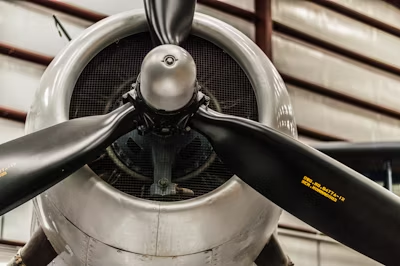
A groundbreaking project has been launched to protect and restore South Dongting Lake in Hunan Province, China. This initiative, the first under the Regional Flyway Initiative (RFI), marks a significant step towards safeguarding critical wetland habitats for migratory birds across the East Asian-Australasian Flyway. The RFI, a collaborative effort between BirdLife International, the Asian Development Bank, and the East Asian-Australasian Flyway Partnership (EAAFP), aims to finance and implement projects that balance conservation and economic development. By investing in wetland restoration and sustainable practices, the RFI seeks to improve the livelihoods of local communities while protecting biodiversity. South Dongting Lake, a vital habitat for thousands of migratory birds, has faced increasing pressure from human activities and climate change. The project will address these challenges through a range of measures, including wetland restoration, sustainable agriculture practices, and community-based conservation initiatives. The Asian Development Bank, in partnership with the Yuanjiang Municipal Government, the Hunan Provincial Government, and the Agence Française de Développement, has committed $308 million to support this ambitious project. The funds will be used to restore nearly 12,000 hectares of degraded wetland, improve water quality, and strengthen the lake’s ecological resilience. By protecting South Dongting Lake, the project will not only…

Invizyne Technologies, Inc. (NASDAQ: IZTC), a leader in cell-free biomanufacturing, announced a $2 million grant to advance the production of sustainable aviation fuel (SAF) using its innovative enzyme-based technology. The project, a cost-share grant awarded by the U.S. Department of Defense’s BioMADE initiative in collaboration with the University of Georgia, highlights the growing importance of biofuels in achieving environmental sustainability. BioMADE seeks to accelerate the commercialization of American-made biomanufactured products and views Invizyne’s project as a key contributor to this goal. “This initiative represents a significant step forward for biofuel production,” said Dr. Douglas Friedman, CEO of BioMADE. “By supporting Invizyne’s cell-free approach, we can potentially create a more efficient and sustainable way to meet the growing demand for clean aviation fuels.” Invizyne’s cell-free technology bypasses the need for living cells, offering a more streamlined and efficient approach to biomanufacturing compared to traditional methods. This grant builds upon Invizyne’s previous $5.85 million grant from the U.S. Department of Energy for the development of cell-free isobutanol production. Isobutanol is a key precursor to SAF, presenting a potential solution for the $27.4 billion global SAF market, projected to grow rapidly in the coming years according to Acumen Research and Consulting. The BioMADE…

Despite its commitment to increasing renewable energy capacity, Azerbaijan continues to prioritize fossil fuel development, according to a new report from Global Energy Monitor. While the country has set a target of reaching 30% renewable energy share by 2030 and is actively pursuing wind and solar projects, the pace of development remains slow. The report highlights that the majority of new power capacity under construction in Azerbaijan is still based on fossil fuels, particularly gas. The 1.3 GW Mingecevir gas power plant, scheduled to be completed by the end of the year, underscores the country’s reliance on fossil fuels for its energy needs. This development contrasts with the global trend towards renewable energy sources, particularly solar and wind power. The Caucasus and Central Asia region as a whole is facing similar challenges. While there are ongoing efforts to expand renewable energy capacity, the dominance of fossil fuels persists. The region’s reliance on fossil fuel exports and the economic benefits associated with them have hindered the transition to cleaner energy sources. As the world prepares for COP29, it is crucial for countries like Azerbaijan to accelerate their transition to renewable energy. By investing in clean energy technologies and implementing supportive policies,…

Researchers at the University of Birmingham have developed a groundbreaking new type of photocurable resin that offers significant advantages over traditional 3D printing materials. The innovative resin is entirely bio-sourced, derived from lipoic acid, a naturally occurring fatty acid molecule. Unlike conventional resins, which often rely on petrochemical-based materials, this new material can be 3D printed, recycled, and then reprinted, creating a more sustainable and circular approach to 3D printing. One of the key challenges in 3D printing is the difficulty in recycling printed objects. Traditional resins form irreversible bonds during the curing process, making recycling difficult. The new bio-sourced resin, however, can be broken down and recycled with minimal loss of material properties. The resin is compatible with various 3D printing techniques, including DLP, SLA, and direct ink write (InkJet) printing. It offers high fidelity and resolution, making it suitable for a wide range of applications, such as sustainable packaging, rapid prototyping, and the production of optical and electronic devices. Professor Andrew Dove, who led the research team, believes that this new material has the potential to revolutionize the 3D printing industry. By offering a more sustainable and circular solution, this innovation can contribute to a greener future. The…

Sungrow, a global leader in renewable energy solutions, has achieved a significant milestone with the completion of a 308-megawatt peak solar installation in Africa. This project underscores the growing potential of solar energy in Africa and its contribution to a sustainable future. The project, one of the largest solar installations in the region, is capable of powering over 110,000 homes and generating approximately 500 million kilowatt-hours of clean energy annually. This achievement showcases the scalability and reliability of solar power, particularly in regions with abundant sunlight. “We are proud to have contributed to this landmark project,” said Thompson Meng, Vice President of Sungrow PV & Storage BG. “This installation demonstrates the significant role solar energy can play in addressing Africa’s growing energy needs and reducing carbon emissions.” The project’s success can be attributed to several factors, including Sungrow’s advanced solar inverter technology, strong partnerships with local stakeholders, and supportive government policies. By leveraging its expertise and innovative solutions, Sungrow has positioned itself as a key player in the global energy transition. As the global demand for clean energy continues to rise, Sungrow remains committed to providing cutting-edge renewable energy solutions. The company’s focus on research and development, coupled with its…

A consortium of Spanish companies and research institutions, including AIMPLAS, Pikolinos, Evatalking, and the Footwear Technology Centre of La Rioja (CTCR), is working on an innovative project to recycle leather waste from the footwear industry. The ECOFAP project aims to develop a new 3D printing material based on recycled natural leather. By reducing the particle size of leather scraps to 10 microns, the consortium seeks to create a versatile material suitable for various applications in fashion, textiles, and footwear. This groundbreaking approach not only reduces waste but also minimizes the environmental impact of the footwear industry. The use of 3D printing technology allows for greater customization and flexibility in design, opening up new possibilities for sustainable and innovative products. The consortium is working to combine micronized leather with various polymers to create a filament suitable for 3D printing. This innovative material can be used to produce components such as soles and heels, reducing the demand for virgin materials and minimizing waste. The ECOFAP project is funded by the Ministry of Science, Innovation, and Universities and Next Generation funds of the European Union.

China Energy Investment Corp (CHN Energy) has made significant strides in its renewable energy initiatives, successfully connecting a 3-GW solar power plant and a 1-GW offshore photovoltaic park to the Chinese grid. The 3-GW Mengxi Blue Ocean Photovoltaic Power Station, built on a former coal mining site in Inner Mongolia, is now fully operational. This massive solar power plant, comprising 5.9 million solar panels, is expected to generate 5.7 billion kWh of clean electricity annually, powering approximately 2 million households. By utilizing a previously mined area, the project demonstrates a commitment to sustainable development and land reclamation. In another groundbreaking achievement, CHN Energy has switched on the first batch of photovoltaic units at a 1-GW offshore solar park in Kenli District, eastern China. This pioneering project, the world’s largest offshore solar plant, covers an area of approximately 1,223 hectares and will generate 1.78 billion kWh of clean electricity annually. Both projects are expected to significantly reduce carbon emissions and contribute to China’s renewable energy goals. By harnessing the power of solar energy, CHN Energy is leading the way in the transition to a low-carbon future.

Liverpool John Moores University (LJMU) has been recognized for its commitment to sustainability in the delivery of its Byrom Street campus transformation project. The project, which involved the creation of a new student zone, a staff lounge, and enhanced facilities for the School of Pharmacy and Biomolecular Sciences and the School of Engineering, has achieved a SKA Silver rating. The SKA rating is a recognized industry standard that assesses the sustainability performance of buildings. LJMU’s project was commended for its focus on energy efficiency, waste reduction, water conservation, and the creation of a comfortable and healthy learning environment. The university’s investment in sustainable practices reflects its commitment to environmental responsibility and social impact. By prioritizing energy efficiency, reducing waste, and improving indoor air quality, LJMU is creating a more sustainable campus for its students and staff. This achievement highlights LJMU’s dedication to providing high-quality facilities and a positive learning experience. The university remains committed to sustainable development and will continue to seek innovative ways to reduce its environmental impact.

NASA has announced a significant investment of $11.5 million to fund five research projects aimed at revolutionizing aviation technology. The initiative, known as the Advanced Aircraft Concepts for Environmental Sustainability (AACES) 2050 program, seeks to identify innovative solutions to reduce the environmental impact of air travel. The selected projects will explore cutting-edge concepts and technologies that could significantly improve aircraft efficiency, reduce emissions, and enhance overall sustainability. By investing in research and development, NASA aims to shape the future of aviation and ensure a more sustainable future for air travel. The awardees, including Aurora Flight Sciences, Electra, JetZero, Pratt & Whitney, and the Georgia Institute of Technology, will work on a range of projects, from advanced propulsion systems to novel aircraft designs. These studies will provide valuable insights into the potential of emerging technologies to address the aviation industry’s environmental challenges. As the aviation industry continues to grow, there is an urgent need to reduce its carbon footprint. By investing in research and development, NASA is taking a proactive approach to addressing this challenge and ensuring the long-term sustainability of air travel.

A consortium of leading European organizations, including European Bioplastics, AIMPLAS, TotalEnergies Corbion, Novamont, Corbion, Sulapac, and Kaneka, has launched the ReBioCycle project. This ambitious initiative, led by University College Dublin and BiOrbic Bioeconomy SFI Research Centre, aims to develop and implement new technologies for recycling biobased biodegradable plastics. The ReBioCycle project focuses on separating and recycling three types of bioplastics: polylactic acid (PLA), polyhydroxyalkanoates (PHAs), and starch-based bioplastics. By re-adapting and upscaling existing sorting technologies, the project aims to demonstrate the feasibility and economic viability of bioplastic recycling at an industrial scale. Prof. Kevin O’ Connor, coordinator of the project, expects that the “ReBioCycle will scale up and demonstrate biobased biodegradable plastics recycling technologies. Biobased biodegradable plastics can be kept in the material cycle for as long as possible through innovative recycling technologies, thus demonstrating that end-of-life biobased biodegradable plastics can be used in the circular bioeconomy.” The project will also contribute to the development of a European blueprint for circular bioplastics, providing valuable insights into the state-of-the-art recycling technologies and their potential impact on the bioeconomy. This blueprint will support the implementation of EU policies such as the Bioeconomy Strategy, the Circular Economy Action Plan, and the future Packaging…










